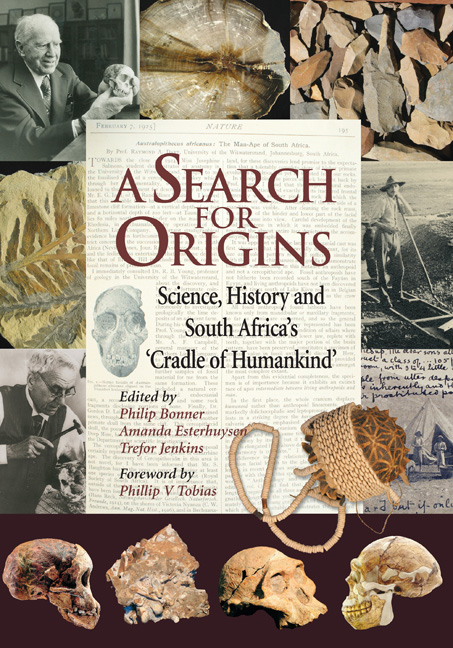Book contents
- Frontmatter
- Contents
- Map
- Foreword
- PART 1 Introduction: Africa is Seldom What It Seems
- PART 2 Introduction: Fossils and Genes: A New Anthropology of Evolution
- PART 3 Introduction: The Emerging Stone Age
- PART 4 Introduction: The Myth of the Vacant Land
- Chapter 9 The Early Iron Age at Broederstroom and Around the ‘Cradle of Humankind’
- Chapter 10 Tswana History in the Bankenveld
- Chapter 11 The Early Boer Republics: Changing Political Forces in the ‘Cradle of Humankind’, 1830s to 1890s
- PART 5 Introduction: The Racial Paradox: Sterkfontein, Smuts and Segregation
- Epilogue: Voice of Politics, Voice of Science: Politics and Science After 1945
- Notes, references and recommended reading
- Notes on contributors
- Acknowledgements
- Index
Chapter 10 - Tswana History in the Bankenveld
from PART 4 - Introduction: The Myth of the Vacant Land
Published online by Cambridge University Press: 31 May 2019
- Frontmatter
- Contents
- Map
- Foreword
- PART 1 Introduction: Africa is Seldom What It Seems
- PART 2 Introduction: Fossils and Genes: A New Anthropology of Evolution
- PART 3 Introduction: The Emerging Stone Age
- PART 4 Introduction: The Myth of the Vacant Land
- Chapter 9 The Early Iron Age at Broederstroom and Around the ‘Cradle of Humankind’
- Chapter 10 Tswana History in the Bankenveld
- Chapter 11 The Early Boer Republics: Changing Political Forces in the ‘Cradle of Humankind’, 1830s to 1890s
- PART 5 Introduction: The Racial Paradox: Sterkfontein, Smuts and Segregation
- Epilogue: Voice of Politics, Voice of Science: Politics and Science After 1945
- Notes, references and recommended reading
- Notes on contributors
- Acknowledgements
- Index
Summary
Images of the past
In November 1829, Robert Moffat, on the first of his journeys to the Ndebele state of Mzilikazi, travelled through the Magaliesberg just on the northern edge of the ‘Cradle of Humankind’. Here he was astonished to find ‘the ruins of innumerable towns, some of amazing extent…[which] exhibited signs of immense labour and perseverance, every fence being composed of stones, averaging five or six feet high…’ He continues in his journal to extol and enthuse about the ‘style’ and the ‘taste’ of the architecture and some of the ‘houses, which escaped the flames of the marauders’ and their ‘melancholy devastations’. In pensive mood, he sifts through ‘these scenes of desolation, casting my thoughts back to the time when [they] teemed with life and revelry…’ (Wallis 1945). In a less romantic mode, Andrew Smith in June 1835 was equally impressed and recorded that ‘[t]he slopes of the hills and knolls were densely covered with ruins of large stone kraals which at the time they were occupied must have contained a great number of inhabitants, though at the time we passed among them not a human being was to be seen’ (Lye 1975).
Moffat and Smith had every right to be impressed because even as ruins, these Tswana towns provide a remarkable legacy of a rich and vibrant history. They had a clear sense of this, even though they must have seen only a small number of these Tswana settlements. Archaeological survey shows that they litter the Magaliesberg landscape (see Figs. 10.1 and 10.2). In contrast, Smith was clearly unimpressed with Mzilikazi's settlement and notes that ‘[t]here was nothing in the appearance of the kraal calculated to impress us with importance of its inmates and, had it not been pointed out to us as the royal residence, we should doubtless have regarded it with indifference…’ (Lye 1975). Both travellers witnessed life in the Magaliesberg during a critical cusp in the region's history. Mzilikazi had established the Ndebele state in the 1820s, and in so doing had subdued, incorporated and reorganised most of the Tswana residents into his new political structure; the Tswana chiefdoms and their towns never recovered from the effects of this encounter.
- Type
- Chapter
- Information
- A Search for OriginsScience, History and South Africa's ‘Cradle of Humankind’, pp. 162 - 179Publisher: Wits University PressPrint publication year: 2007



